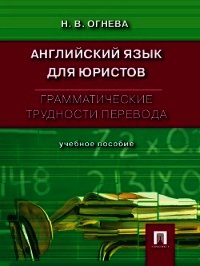Английский язык: самоучитель - Шевчук Денис Александрович (читать книги онлайн бесплатно без сокращение бесплатно txt) 📗
Buy a new keyboard! – Купите новую клавиатуру!
Отрицательная форма повелительного наклонения:
Don’t (Do not) send this fax! – Не посылайте этот факс!
Don’t discuss this problem today! – Не обсуждайте эту проблему сегодня!
Do not buy a keyboard in this shop! – Не покупайте клавиатуру в этом магазине!
8. Read the dialogue. Fill in the missing words taking.
Прочитайте диалог. Дополните его указанными словами.
Type, department, look, come, send, ask, sit, use, wait, get
Boss: .................. with me, Miss Marston. This ............ has five offices. This is your office and your desk. .................. down, please.
Girl: But I can’t see the chair.
Boss: Chair? You are right. ............... the chair!
Girl: Where can I get the chair?
Boss: In the next office. Never mind. ............... the letter now.
Girl: But where is the paper?
Boss: Paper? Don’t .................. such questions! ............ at the top drawer of the desk!
Girl: But the desk doesn’t have drawers!
Boss: Miss Marston. Get a chair, the paper and the drawers!
Girl: How?
Boss: .................. the phone, Miss Marston. Use the phone.
Girl: And where is the phone?
Boss: No phone?
Girl: No.
Boss: But you have a fax-machine. ............ a fax, Miss Marston. Send a fax.
Girl: Do you have the sockets? For the fax-machine.
Boss: Sockets? Of course. Oh. No sockets.
Girl: I can’t work here! I can’t!
Boss: You can. .................. for me ... There! Now you can work.
9. Make up word combinations.
Составьте словосочетания.
Don’t send
Eat
Don’t listen to
Open
Wait for
Organise
Don’t discuss
Improve
Don’t sell
Keep
me, please!
our meeting at midday!
an eye on this business!
healthy food!
this terrible music!
your health!
your old monitor!
a new file!
the fax now! Alice can do it.
your boss with your colleagues!
FOCUS ON GRAMMAR
Активная грамматика
Language focus 1
The Present Continuous Tense (More practice)
Настоящее продолженное время (Дополнительная практика)
1. There is one mistake in each sentence. Find and correct it.
Найдите ошибку в каждом из данных предложений.
1. She is often working on the keyboard.
2. Where are they draw now?
3. We is waiting for our friend now.
4. Julia usually doing a wide variety of things.
5. The secretary organise a meeting every Tuesday.
6. The couriers are to using all telephone lines at the moment.
7. The boss is signing the documents now?
8. They not are waiting for me in the reception.
2. Translate the sentences.
Переведите предложения.
1. В этом отделе менеджеры сейчас обсуждают широкое разнообразие вещей.
2. Вы сейчас используете новое офисное оборудование для своих арендаторов?
3. Они часто обсуждают их аренду с клиентами.
4. Наш босс обычно не подписывает документы немедленно.
5. Мы сейчас готовим новую компьютерную презентацию о нашем жилом районе
6. Почему он часто ходит в химчистку?
7. В настоящий момент мои дети рисуют в соседнем офисе.
8. Он часто организует встречи на этой территории.
3. Answer the questions.
Ответьте на вопросы.
1. What document are you typing now?
2. How often do you discuss problems with your wife?
3. Is your boss signing the documents at the moment?
4. Who always organises meetings in your department?
5. What presentation are you preparing now?
6. Are you waiting for a message now?
7. Who is working in the next office?
8. Do your children always eat healthy food?
9. Do you post your letters immediately?
10. Are your clients waiting for you in the reception area at the moment?
Language focus 2
There is/are
Some/any/no
Структура there is/are
Неопределенные местоимения some/any/no
I. Чтобы назвать предмет или лицо, находящееся в некотором месте, используется особый оборот There is/There are. Оборот There is/There are стоит в начале предложения, за ним стоит называемый предмет или лицо, в конце предложения уже известное место расположения предмета или лица. На русский язык предложение переводится с конца, то есть с уже известного обстоятельства места.
Например:
There is a computer in this office.
В этом офисе есть компьютер.
There are five clients in the reception.
В приемной пять клиентов.
Вопросительные и отрицательные предложения:
There’s a phone here.
Is there a phone here?
There isn’t a phone here.
Сравните два предложения:
The couriers are in that department.
Курьеры – в том отделе. Это предложение является ответом на вопрос: Где курьеры?
There are our couriers in that department.
В том отделе наши курьеры. Предложение является ответом на вопрос: Кто в том отделе?
Если по смыслу требуется наречие there (там), оно ставится в конце предложения в качестве наречия места.
There are two keyboards there. Там две клавиатуры.
II. Чтобы указать на некоторое количество предметов используются неопределенные местоимения (с исчисляемыми и неисчисляемыми существительными) some(в утвердительных предложениях)/any (в вопросительных и отрицательных)/no (в отрицательных предложениях).
There is some water on the table. На столе немного (некоторое количество) воды.
There are some people in the office. В офисе несколько людей.
Are there any people in the office? Есть в офисе люди?
There are no people in the office. В офисе нет людей.
4. Answer the questions.
Ответьте на вопросы.
Например:
What is there on the table? There are two files on the table.
Where is the table? The table is next to the window.
1. Where are the airline tickets?
2. Where is the International department?
3. What is there in the drawer?
4. What is there behind the wastepaper basket?
5. Where is the reception area?
6. What is there in the next office?
7. How many rooms are there in your flat?
8. How many messages are there in the mail-box?
9. Where are the video recorders?
10. Who is there in the meetings room?
5. Change the sentences in the Singular into the Plural and the Plural into the Singular.
Поставьте глагол единственного числа во множественное, и наоборот.
Например:
There are five offices in this department. There is an office in this department.
There is a fax-machine on the table. There are fax-machines on the table.
There are some clients in the reception.
There is some water in the bottle.
There are seven sockets in the room.
There are three drawers in the desk.
There is a message in the mail-box.
There are some documents there.
There is some post on the boss’ desk.
There are some transparencies next to the overhead projector.
6. Make up interrogative and negative sentences.Give their translation.
Составьте вопросительные и отрицательные предложения. Переведите их на русский язык.
Например:
There are five computers in the office. Are there five computers in the office? There aren’t five computers in the office.
В офисе 5 компьютеров. В офисе 5 компьютеров? В офисе нет пяти компьютеров.
There is a chair behind each desk.




